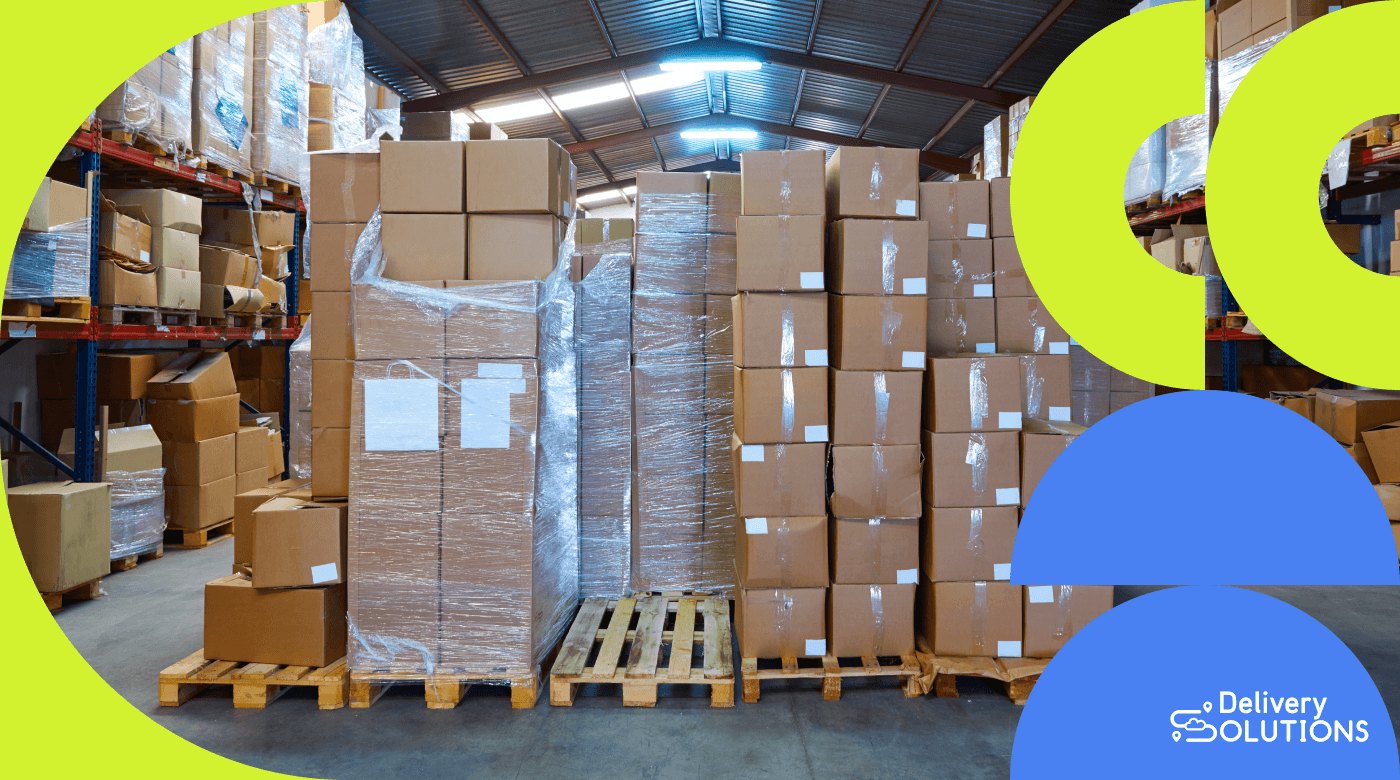Modern digital marketplaces continue to experience exponential growth. They're breaking down geographical barriers and offering consumers a wider range of choices.
Technological advancements are accelerating this growth. Alongside changes in consumer behaviors, more revenue is flowing through the online economy.
With the rise of online shopping, the returns process has increasingly demanded attention.
In a physical store, customers can touch, feel, and try products. Being able to do so leads to more certain purchase decisions. In contrast, e-commerce lacks this tangibility, resulting in a higher likelihood of returns.
Automated returns are revolutionizing the e-commerce industry by streamlining the process of returning purchased items.
In this article, we’ll explore the benefits of automated returns. We'll also look at how they’re shaping the future of e-commerce.
What are automated returns?
Automated returns are integral to a company's backend operations. They aim to simplify the process of returning purchased items. This system oversees the return's entire lifecycle.
It starts with the customer's initial inquiry and ends with the final resolution. This enhances efficiency and increases customer satisfaction.
Businesses can leverage technology platforms like Delivery Solutions to expedite their returns process.
Companies can automate returns to process and manage them swiftly. This eliminates the need for the extensive manual effort that old-fashioned methods demand. Automating returns brings many advantages compared to traditional, manual processing. It accelerates the process and delivers a more precise and customer-friendly experience.
Automated returns hold significant importance for online businesses. This becomes clear upon reviewing statistics related to retail returns.
According to a report by the National Retail Federation, in 2021, the retail industry saw $761 billion in merchandise returns. This accounts for an average of 16.6% of total U.S. retail sales. Online purchases have a higher return rate, averaging 20.8%. This high volume of returns underscores the need for an efficient management system.
How automated returns benefit the customer
Automated returns systems focus on customer service. Customers often feel frustrated by long wait times during return inquiries. Sometimes, companies do not answer emails, leading customers to lose faith. As a result, these customers might turn to competitors for future purchases.
An automated system provides various features to streamline the returns process. It ensures customers stay informed and involved at every touchpoint.
Here are some of the ways automating returns benefits the customer:
1. Integrated customer-facing returns interface
Automated returns systems provide a user-friendly interface. Customers can start returns through this platform. They do not need to call or email customer service. This convenience puts control in the hands of the customer.
They can manage their returns at any time, from anywhere. The system guides them through each step, ensuring clarity. Retailers enjoy reduced customer service inquiries. This setup improves the shopping experience, encouraging customer loyalty.

2. Automated returns authorization
These systems feature automated returns authorization. They instantly approve or reject returns based on set rules. This automation streamlines the returns process.
Customers receive immediate feedback on their return requests. Retailers minimize the need for staff to review each return manually. This efficiency leads to faster processing times.
It also ensures consistency in handling returns. Retailers can set criteria that align with their return policy, maintaining control over the process.
3. Integration with shipping and returns systems
Automated returns systems connect with shipping and returns frameworks. This connection streamlines the entire returns journey. Customers enjoy a smooth process from start to finish. They can send back their purchases using pre-selected shipping options.
Retailers enjoy streamlined operations, reducing the complexity of handling returns. This system gives customers more options and flexibility for returning their purchases.
4. Automatic refund or exchange
Upon receiving returned items, businesses quickly start refunds or exchanges. This efficiency transforms a potentially negative customer experience into a positive one.
Customers appreciate the swift resolution, fostering loyalty. Retailers can maintain inventory accuracy and manage returns effectively. This process ensures customer satisfaction and encourages repeat business.
5. Data analytics and reporting
Automated returns systems analyze return patterns and customer behavior. This analysis helps retailers identify trends and areas for improvement.
Businesses can tailor their offerings and return policies based on real data. Better customer understanding leads to better decision-making. Retailers can use these insights to reduce return rates and increase customer satisfaction.
6. Automated communication
Automated messages update customers at every step of the returns process. This transparency builds trust and reduces customer anxiety.
Customers receive notifications about their return status, refund, or exchange details. This communication strategy ensures customers feel valued and informed. Retailers can reduce the workload on customer service teams. Doing so allows them to focus on more complex queries.
Why automated returns are key to future-proofing growth
As online shopping grows, every part of the experience must meet customer expectations. This includes the returns aspect of the business.
Businesses aiming to future-proof themselves should embrace technological advancements in the industry.
Customers prefer shopping with trustworthy brands. A strong returns process influences their purchasing decisions. Companies that don't offer a seamless experience risk negative reviews and social comments. This directly impacts consumer trust.
Customer expectations around returns
Savvy consumers expect a seamless experience from sale to potential return. They expect a fluid, automated returns process that is hassle-free and efficient.
A positive return experience can turn a negative situation into a positive one, helping businesses to keep the customer for future purchases.
51% of consumers research a product before buying. Meanwhile, 35% find influence in online reviews. This highlights the role of customer satisfaction in all aspects of the experience.
The returns policy of a business can affect a customer's decision to buy. A clear returns policy reassures potential customers, offering them a risk-free sale. The importance of this customer service aspect is huge. Indeed, 97% of people agree that customer service determines their loyalty to a brand.
Building trust and loyalty
Automated returns systems enhance brand transparency, which builds trust with customers. Businesses can strengthen customer loyalty and satisfaction with automation. Automation eliminates unnecessary barriers in the returns process and makes it user-friendly.

A positive return experience forms a feedback loop. It encourages customers to come back, even after a negative product experience.
Cost-effectiveness and repeat business
It is five times more expensive to acquire new customers than to keep existing ones. A positive return experience drives repeat business. It's also more cost-effective in the long run.
Automated returns systems play an important role by ensuring a smooth returns process.
Competitive advantage
An automated returns system also provides businesses with a competitive edge. Companies that are slow to adapt to this evolving landscape risk falling behind. Automated returns focus not only on managing the present but also on staying ahead in the future.
Businesses aiming to build brand loyalty should invest in a stronger returns process. As more people shop online, customer expectations have risen. Modern technology automates the returns process without adding staff or driving up costs.
Leveraging technology provides a competitive advantage by offering a superior customer experience.
The benefits of introducing automated returns
Automated returns don’t just benefit the customer. They have significant advantages for businesses that invest in them.

Three key ways automated returns benefit your business are:
Cost saving and operational efficiency
- Reduced labor and processing overheads. Automated returns reduce the need for manual labor in processing returns. This leads to lower overhead costs driven up by staffing.
- Handle higher returns in a shorter time frame. These systems can process larger volumes more efficiently, saving time and resources.
- Optimized shipping and handling integration. Automated returns integrate with shipping and handling systems, optimizing logistics and reducing errors.
Improved customer experience and retention
- Streamlined returns process. Automation eliminates the need for manual intervention, offering customers a hassle-free returns process.
- Speedy resolution of return requests. Automated systems ensure quick returns processing, leading to faster customer resolution.
- Transparent communication with customers. These systems provide clear and continuous communication with customers. This allows for deeper transparency and trust between the brand and the consumer.
Data insights and inventory management
- Deep customer insights. Automated returns systems gather valuable customer preferences and behavior data. This enables businesses to tailor their offerings and improve customer satisfaction.
- Automated inventory management with real-time updates. These systems provide real-time updates on inventory. This allows for efficient stock management and quicker identification of product issues.
Partnering with Delivery Solutions enables businesses to use modern fulfillment options. From eco-friendly options to multi-method returns, our returns solutions provide a hassle-free experience.
How to install a streamlined automated returns process
Switching from an outdated, costly manual system to automated returns benefits business owners. Customers can manage their returns, reducing the need for manual help. This allows your staff to concentrate on acquiring new customers.
Like any change, your staff may face a learning curve. Training will be necessary to familiarize them with the new systems.
Here's a step-by-step guide for adopting automated returns in your business:
Step 1: Assessing your return needs
- Check the current customer returns process. Begin by analyzing your current returns process. Identify bottlenecks, customer pain points, and areas where manual processes are causing errors.
- Define goals for automated returns. Establish clear objectives for the transition. These might include:
- Reducing operational costs
- Enhancing the customer experience
- Speeding up the returns process
- Gaining actionable insights into customer return patterns and behavior
Step 2: Customize the return process

- Tailor to business requirements. Understand that each business has unique needs and customer expectations. Customize your returns process to cater to these specific requirements.
- Offer diverse options for different consumer segments. Think about providing a range of return options to meet customer preferences. These options could feature eco-friendly returns, appealing to environmentally conscious consumers. You may also offer home pickups for customers who focus on ease and simplicity.
- Creating a fully branded experience. Ensure every aspect of the returns process reflects your brand. This includes branded return labels, packaging, and the language used in automated communications.
Step 3: Integrate with your e-commerce platform
- Seamless integration for a better customer experience. Integration with your e-commerce platform is crucial for a seamless customer experience. This step ensures the returns process is a natural extension of the shopping journey.
- Conduct testing. Undertake testing of the returns process. Check everything functions from a customer's perspective. Look at the user interface, return confirmation emails, and the speed of processing.
Step 4: Train your team
- Empower your team. Train your team to manage the new returns system efficiently. This includes understanding the software, handling customer queries, and managing returns logistics.
- Support and resources. Use the extensive support and resources offered by partners like Delivery Solutions. Our expertise in automated returns provides valuable insights for your team.
Step 5: Launch and track the new system
- Effective Communication. Once you launch the system, communicate the change to your customers. Highlight the new system's benefits, such as faster processing and more return options.
- Ongoing monitoring and feedback: Watch the system's performance after launch. Gather feedback from both customers and staff to identify areas for improvement. Troubleshoot any problems that arise to maintain customer trust and satisfaction.
Automate your returns process with Delivery Solutions
Ready to change your returns processes and adopt a more future-friendly approach?
Delivery Solutions is an Omnichannel Experience Platform that transforms the returns process. It offers a comprehensive suite of enterprise-grade omnichannel products.
Designed with a focus on customer experience, Delivery Solutions equips retailers with deep insights into efficiency gaps. Access AI-powered analytics and new revenue opportunities, all through one system.
This unified strategy enables brands to move beyond the constraints of single-use products. It allows them to offer seamless customer experiences without any disruption.
Book a demo with us today to learn more about how we can help automate your returns process.
Caitlyn Metzker
Caitlyn Metzker, a professional with 9 years of experience, brings a wealth of insight to her Sr. Enterprise Account Executive role. As a University of South Carolina graduate, Caitlyn has honed her skills within the industry previously with Roadie and Kabbage. Originating from Philadelphia, her multifaceted interests include traveling, hiking, soccer, swimming, and boating, reflecting her adventurous spirit. Her favorite getaway is the picturesque Kauai, Hawaii. Caitlyn's business philosophy underscores the importance of continuous learning, as she believes that "there is always more to learn; absorb as much as you can." When not devising groundbreaking strategies, Caitlyn unwinds by delving into books or enjoying the serene beach. Adding a unique touch, she cherishes the privilege of occasionally working alongside her sister and mother as part of the UPS Digital family. Caitlyn's profound industry knowledge and passion make her an invaluable asset to our B2B SaaS sales and marketing team.
.png)